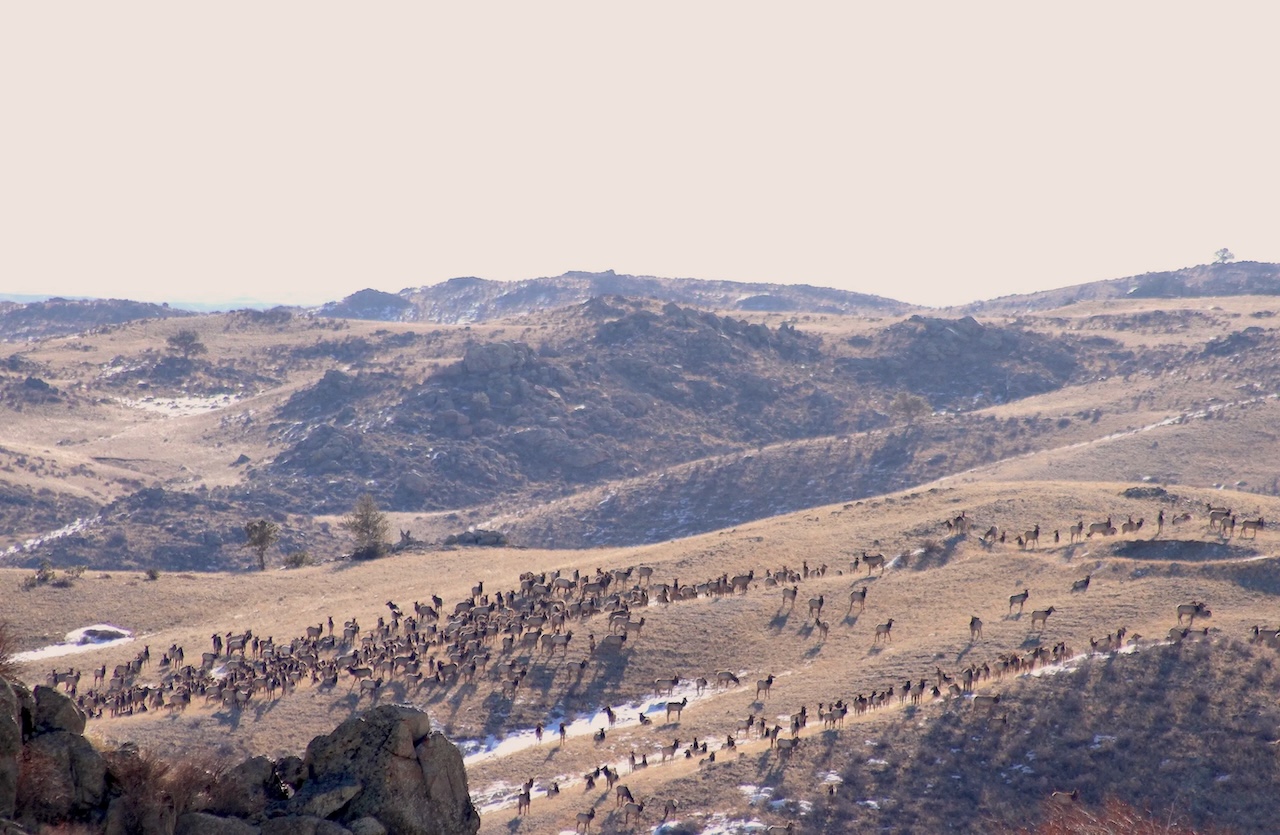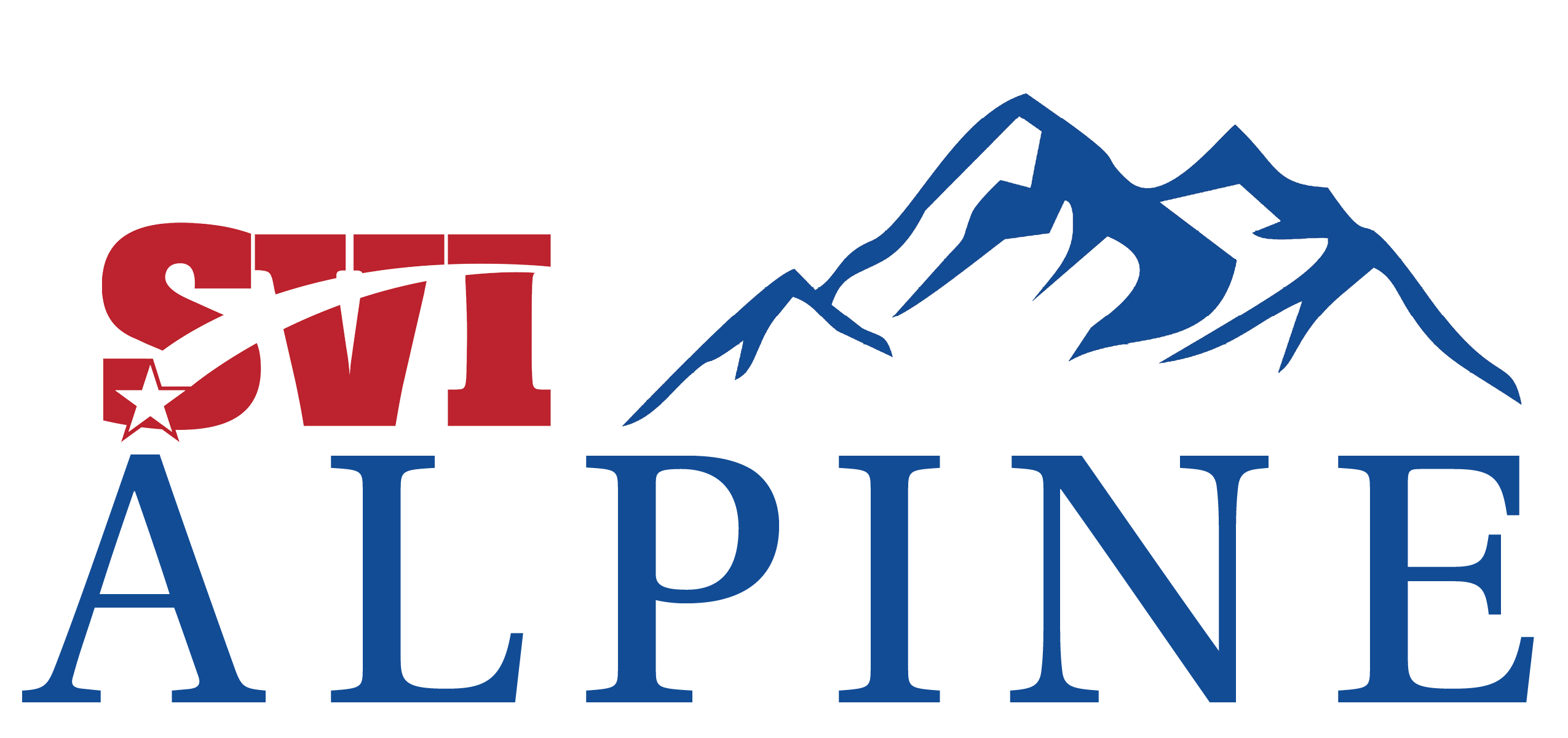No one is using a controversial compensation program for grass lost to overpopulated Wyoming elk
By Wyoming News Exchange
September 15, 2025

A herd of about 300 elk grazes private land in the Iron Mountain area in February 2024. (Mike Koshmrl/WyoFile)
• Because program was conceived in response to a big stink about elk numbers and damage, Game and Fish commissioner is ‘shocked’ by the absence of claims.
By Mike Koshmrl, WyoFile.com
There’s been virtually no interest in a new state program to provide financial relief to stockgrowers whose rangelands are grazed by overpopulated elk herds, according to Wyoming wildlife officials.
The payment program’s slow uptake took some members of the Wyoming Game and Fish Commission by surprise at a Tuesday meeting in Lander.
“I guess I’m shocked,” Ken Roberts said.
The Game and Fish commissioner from Kemmerer noted the “urgency” portrayed by “a lot of folks” who were “adamant that this had to be done.” Most of the pressure for the compensation came from landowners who’ve struggled to run cattle amid overpopulated elk herds in central and eastern Wyoming.
Game and Fish’s deputy chief of wildlife, Craig Smith, led the conversation and was quick to note that zero claims were filed in the first year of the new policy. Some landowners had inquired about how it works, he said.
Adjustments to Game and Fish’s compensation for “extraordinary damage to rangelands” trace back to summer 2023, when there was a tense Wyoming legislative meeting about elk damage. The following legislative session, the Agriculture Committee brought an unsuccessful but controversial bill that would have mandated compensation rates for grass on dry rangeland lost to elk inside overpopulated big game herd units. Then in fall 2024, the Wyoming Game and Fish Commission voluntarily updated its compensation regulations in an effort to placate ranchers and keep lawmakers at bay.
The compensation plan is specific to non-cultivated livestock rangeland, and there are several requirements:
Landowners can receive “extraordinary damage to grass” funds when a big game herd is overpopulated by 20% or more for three or more consecutive years and the species is consuming 15% or more of the estimated forage on private ground. (Payments are still possible when herds are not overpopulated if more than 30% of the forage is being consumed.)
Landowners must also allow a “sufficient number of hunters” on the property. That means the necessary number of hunters to offset the “recruitment,” or the number of animals born into the population that survived one year.
When the new rules were being vetted with the public, they proved widely unpopular with sportspeople — 46 of the 48 public comments on the draft regulation that stated a position opposed the new payment program. The unpopularity stemmed partly from worries that the damage claims could exacerbate an emerging Game and Fish budget crunch.
“It was supposed to be a substantial amount,” Roberts told WyoFile.
Although perplexing, the lack of interest is also a relief, he said: “I’m glad to hear it.”
Wyoming Stock Growers Association lobbyist Jim Magagna, who was a major proponent of the legislation and Game and Fish policy change, shared the view.
“I’m certainly glad it didn’t result in a flood of demands for compensation that would overwhelm the available funds,” he said.
Magagna partly attributed the absence of claims to unfamiliarity with the new funding stream.
“Landowners are not yet fully aware of that opportunity,” Magagna told WyoFile. “As an organization, we try to keep people aware of things, but we certainly didn’t put anything out encouraging people to apply for damages— it’s an individual decision.”
Wyoming Game and Fish, he added, has also come through in helping frustrated ranchers address overpopulated elk herds via other efforts.
“The Game and Fish have been responsive with granting licenses to landowners, and they’re even bringing in professional hunters to remove elk,” Magagna said. “If the wildlife populations can be appropriately managed and the claims go away, that’s better for everyone.”
WyoFile is an independent nonprofit news organization focused on Wyoming people, places and policy.

